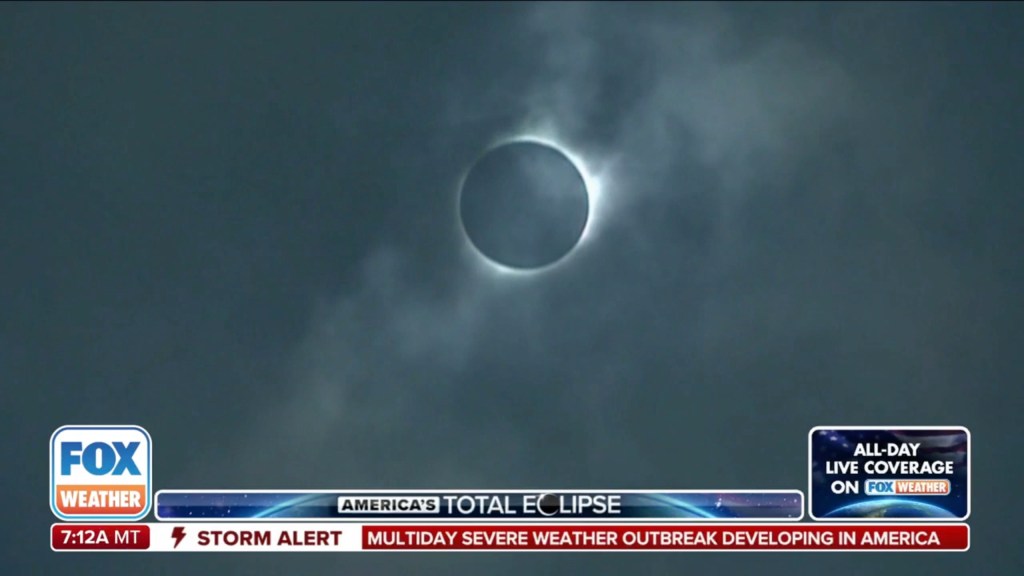Solar eclipse forecast shows who has best chance for clear skies on April 8
Forecasts for the total solar eclipse now show a higher probability of clouds threatening parts of the southern and central U.S., while the Northeast and New England trend in the right direction with an improving outlook for less cloud coverage.
On April 8th, a total solar eclipse will be visible across parts of Mexico, Canada and the U.S., from Texas to Maine.
A total solar eclipse happens when the Moon passes between the Sun and the Earth, completely blocking the face of the Sun for several minutes.
It will be the last time a total solar eclipse passes over a large part of the U.S. until 2044.
To experience the full eclipse, you’ll need a pair of solar glasses and to be located along the more than 100-mile-wide path during totality.
A clear sky is also key to watching a total solar eclipse.
The FOX Forecast Center has put together the cloud cover forecast shown on the map below, showing areas with an overcast sky, many clouds or few clouds during the eclipse.
As the eclipse nears, computer forecast models will improve and be able to give forecasters a better idea of what the sky will look like on the big day.
One week ahead of April 8th, the FOX Forecast Center said the trend for clearer skies is improving at the northeastern end of the path of totality but is getting worse for clouds at the southwestern end of the eclipse path.
Cities along the path of totality, including Buffalo, New York, are currently forecast to have few clouds on the day of the event.

The forecast is also looking favorable for Caribou, Maine, one of the last places to see the eclipse in the U.S. before the path of totality heads into Atlantic Canada.
For the Midwest, cloud cover could be less around Paducah, Kentucky, and near St. Louis but will increase closer to the Great Lakes region, including Cleveland.
For now, clouds remain most probable around the Great Lakes and Gulf Coast, with greater confidence in less cloud cover around Florida and New England.
Many of the prime viewing spots of Texas through the mid-Mississippi and Ohio valleys are currently forecast to have overcast or many clouds.
Popular viewing spots, including San Antonio and Dallas, may have trouble from clouds on April 8th.
The details will become clearer as the event draws closer, so stay tuned, the FOX Forecast Center said.
We can also look at cloud climatology data to see where clouds are more likely to cover the eclipse on April 8th. The map below shows the cloud cover averages over the past 30 years.
It’s also important to note that even if it’s cloudy, you will likely still see at least some of the eclipse.
Read the full article Here


